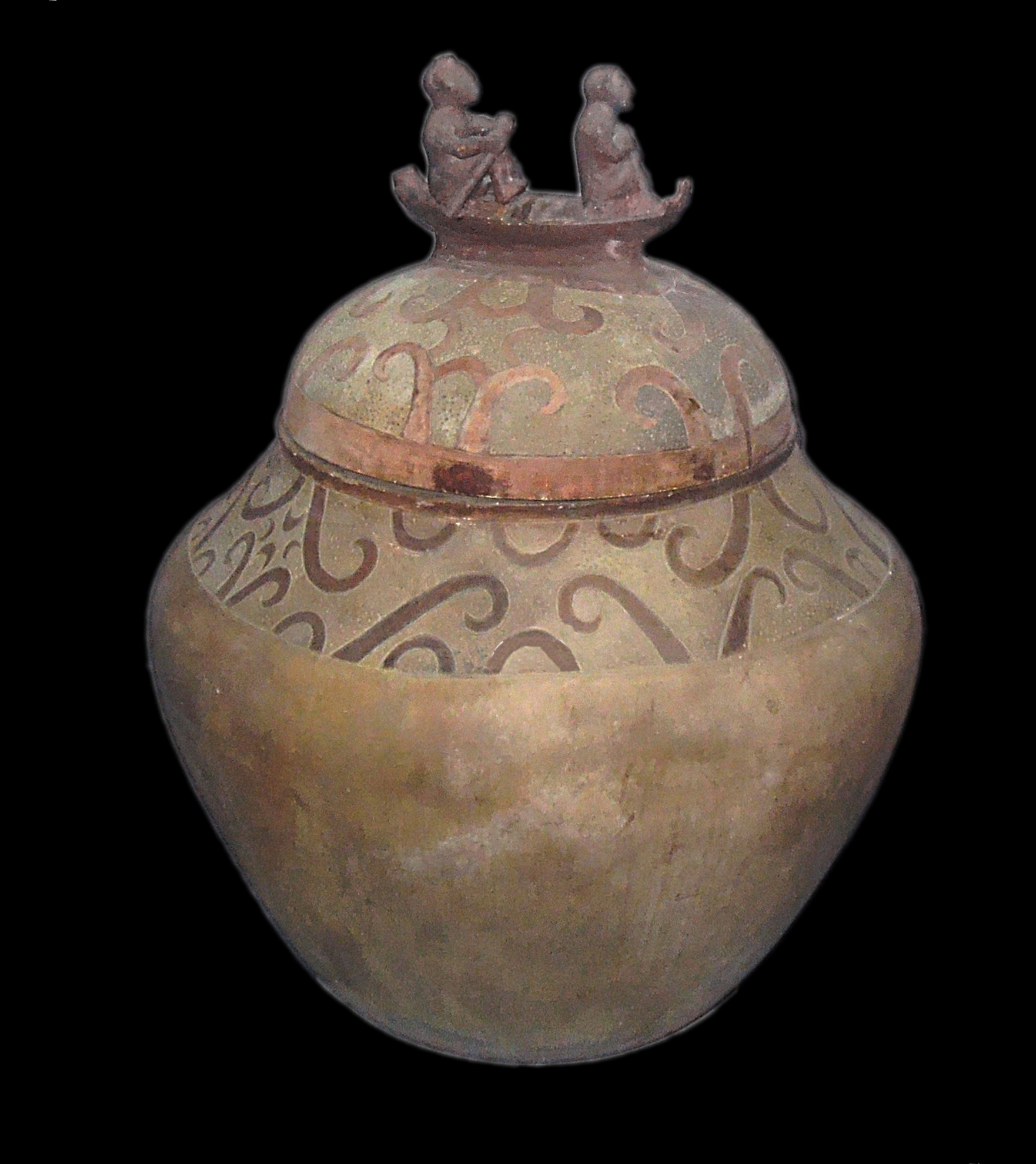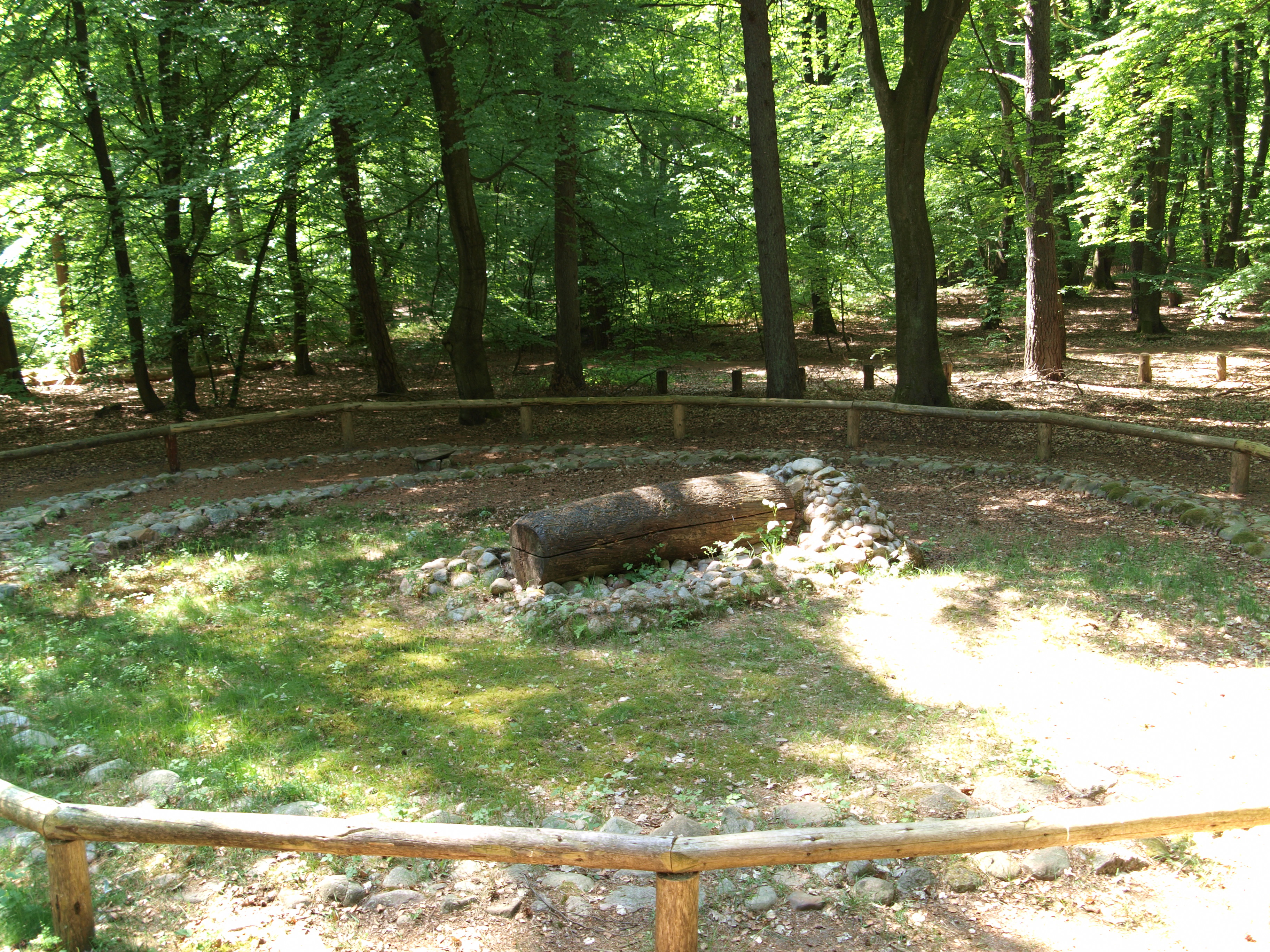|
Guyangan Cave System
The Guyangan Cave System ( fil, Mga Yungib ng Guyangan) is a group of caves located in the island municipality of Banton, Romblon in the Philippines. It is located in Guyangan Hill, a limestone formation situated in barangays Togbongan and Toctoc, and consists of seven caves spread in an area of forest land. The caves are a significant archaeological site and a national cultural treasure of the Philippines as it is the site of ancient burial grounds where wooden coffins, human skeletal remains as well as the oldest burial cloth in Southeast Asia were discovered during explorations by the National Museum of the Philippines in 1936. These artifacts are now displayed at the National Museum of Anthropology in Manila. Geography The island of Banton, where the cave system is located, lies on the northern portion of the Sibuyan Sea, and is equidistant between Marinduque Island to the north and Tablas Island to the south. It is composed of the main island of Banton and the uninhabite ... [...More Info...] [...Related Items...] OR: [Wikipedia] [Google] [Baidu] |
Pleistocene
The Pleistocene ( , often referred to as the ''Ice age'') is the geological Epoch (geology), epoch that lasted from about 2,580,000 to 11,700 years ago, spanning the Earth's most recent period of repeated glaciations. Before a change was finally confirmed in 2009 by the International Union of Geological Sciences, the cutoff of the Pleistocene and the preceding Pliocene was regarded as being 1.806 million years Before Present (BP). Publications from earlier years may use either definition of the period. The end of the Pleistocene corresponds with the end of the last glacial period and also with the end of the Paleolithic age used in archaeology. The name is a combination of Ancient Greek grc, label=none, πλεῖστος, pleīstos, most and grc, label=none, καινός, kainós (latinized as ), 'new'. At the end of the preceding Pliocene, the previously isolated North and South American continents were joined by the Isthmus of Panama, causing Great American Interchang ... [...More Info...] [...Related Items...] OR: [Wikipedia] [Google] [Baidu] |
Tabon Caves
The Tabon Caves, dubbed as the ''Philippines' Cradle of Civilization'', are a group of caves located on Lipuun Point, north of Quezon municipality, in the south western part of the province of Palawan on Palawan Island, in the Philippines. They are part of the Lipuun Point Reservation, which has been protected by the government of the Philippines as a museum reservation to protect the caves and immediate vicinity from deforestation and to preserve the cultural artifacts present there. The caves are named after the Tabon scrubfowl. It is bordered on the south by the town proper of Quezon, Panitian on the west, and the South China Sea on the north and east. Out of 215 known caves, 29 have been explored and seven of these are open to the public. The seven include Tabon, Diwata, Igang and Liyang Caves. One of the oldest human bones found in the Philippines, the Tabon Man, was found here in 1962. Other excavated, unexamined remains are stored onsite. In 2006, the ''Tabon Cave Comp ... [...More Info...] [...Related Items...] OR: [Wikipedia] [Google] [Baidu] |
GMA Network
GMA Network (Global Media Arts or simply GMA) is a Philippine free-to-air television and radio network. It is the flagship property of publicly traded GMA Network, Inc. Its first broadcast on television was on October 29, 1961. GMA Network (formerly known as Republic Broadcasting System, GMA Radio-Television Arts and GMA Rainbow Satellite Network) is commonly referred to as the Kapuso Network in reference to the outline of the company's logo. It is headquartered in the GMA Network Center in Quezon City and its transmitter, Tower of Power, is located at Tandang Sora Avenue, Barangay Culiat also in Quezon City with regional stations and offices strategically located in over 9 major cities across the country. The original meaning of the GMA acronym was Greater Manila Area, referring to the initial coverage area of the station. As the network expanded it changed into Global Media Arts. The flagship television station of GMA is DZBB-TV (GMA-7 Manila) which carries VHF Channel 7 (a ... [...More Info...] [...Related Items...] OR: [Wikipedia] [Google] [Baidu] |
Secondary Burial
The secondary burial (German: ''Nachbestattung'' or ''Sekundärbestattung''), or “double funeral”Duday, Henri, et al. The Archaeology of the Dead: Lectures in Archaeothanatology. United Kingdom, Oxbow Books, 2009. (not to be confused with double burial in which two bodies are interred together) is a feature of prehistoric and historic gravesites. The term refers to remains that represent an exhumation and reburial, whether intentional or accidental. Examples of secondary burial are known from the Paleolithic period, (including the Middle Paleolithic Mousterian culture and the Upper Paleolithic Magdalenian culture)Orschiedt, Jörg. "Secondary burial in the Magdalenian: the Brillenhöhle (Blaubeuren, southwest Germany)." PALEO. Revue d'archéologie préhistorique 14 (2002): 241-256. and continuing through the Mesolithic periodGrünberg, J. M., et al. "Mesolithic burials—Rites, symbols and social organisation of early postglacial communities." Halle, Congresses of the State ... [...More Info...] [...Related Items...] OR: [Wikipedia] [Google] [Baidu] |
Artificial Cranial Deformation
Artificial cranial deformation or modification, head flattening, or head binding is a form of body alteration in which the skull of a human being is deformed intentionally. It is done by distorting the normal growth of a child's skull by applying force. Flat shapes, elongated ones (produced by binding between two pieces of wood), rounded ones (binding in cloth), and conical ones are among those chosen or valued in various cultures. Typically, the shape alteration is carried out on an infant, as the skull is most pliable at this time. In a typical case, headbinding begins approximately a month after birth and continues for about six months. History Intentional cranial deformation predates written history; it was practiced commonly in a number of cultures that are widely separated geographically and chronologically, and still occurs today in a few areas, including Vanuatu. The earliest suggested examples were once thought to include Neanderthals and the Proto-Neolithic ''Homo sa ... [...More Info...] [...Related Items...] OR: [Wikipedia] [Google] [Baidu] |
Chinese Ceramics
Chinese ceramics show a continuous development since pre-dynastic times and are one of the most significant forms of Chinese art and ceramics globally. The first pottery was made during the Palaeolithic era. Chinese ceramics range from construction materials such as bricks and tiles, to hand-built pottery vessels fired in bonfires or kilns, to the sophisticated Chinese porcelain wares made for the imperial court and for export. Porcelain was a Chinese invention and is so identified with China that it is still called "china" in everyday English usage. Most later Chinese ceramics, even of the finest quality, were made on an industrial scale, thus few names of individual potters were recorded. Many of the most important kiln workshops were owned by or reserved for the emperor, and large quantities of Chinese export porcelain were exported as diplomatic gifts or for trade from an early date, initially to East Asia and the Islamic world, and then from around the 16th century to Euro ... [...More Info...] [...Related Items...] OR: [Wikipedia] [Google] [Baidu] |
Asi Language
Bantoanon or Asi is a regional Bisayan language spoken, along with Romblomanon and Onhan, in the province of Romblon, Philippines. Asi originated in the island of Banton, Romblon and spread to the neighboring islands of Sibale, Simara, and the towns of Odiongan and Calatrava on Tablas Island. The Asi spoken in Odiongan is called Odionganon, Calatravanhon in Calatrava, Sibalenhon in Concepcion, Simaranhon in Corcuera, and Bantoanon in Banton. Specifically, it is spoken on the following islands within Romblon: * Tablas: the municipalities of Odiongan and Calatrava, situated respectively on the western and northern parts of the island. The Odiongan dialect has more outside influences and is more widely used in literature. * Banton: the island's sole municipality of Banton. * Simara: the island's sole municipality of Corcuera. *Maestre de Campo (also known as Sibale): the island's sole municipality of Concepcion. Linguist David Zorc notes that Bantoanon speakers may have ... [...More Info...] [...Related Items...] OR: [Wikipedia] [Google] [Baidu] |
Swift (bird)
The swifts are a family, Apodidae, of highly aerial birds. They are superficially similar to swallows, but are not closely related to any passerine species. Swifts are placed in the order Apodiformes with hummingbirds. The treeswifts are closely related to the true swifts, but form a separate family, the Hemiprocnidae. Resemblances between swifts and swallows are due to convergent evolution, reflecting similar life styles based on catching insects in flight. The family name, Apodidae, is derived from the Greek ἄπους (''ápous''), meaning "footless", a reference to the small, weak legs of these most aerial of birds.Jobling (2010) pp. 50–51.Kaufman (2001) p. 329. The tradition of depicting swifts without feet continued into the Middle Ages, as seen in the heraldic martlet. Taxonomy Taxonomists have long classified swifts and treeswifts as relatives of the hummingbirds, a judgment corroborated by the discovery of the Jungornithidae (apparently swift-like hummingbird-relati ... [...More Info...] [...Related Items...] OR: [Wikipedia] [Google] [Baidu] |
Banton Wooden Coffin (born 1998), English Cricketer
{{disambig ...
Banton may refer to: Places * Banton, Romblon, island municipality in the Philippines * Banton, North Lanarkshire, a village near the town of Kilsyth, Scotland People *Bernie Banton, Australian asbestosis victims campaigner *Buju Banton, Jamaican dancehall deejay and singer *Burro Banton, Jamaican dancehall deejay *Dalano Banton (born 1999), Canadian basketball player *Hugh Banton (born 1949), British organist and organ builder *Michael Banton (born 1926), British social scientist *Pato Banton (born 1961), British reggae singer and deejay *Starkey Banton (born 1962), British reggae deejay *Tom Banton Thomas Banton (born 11 November 1998) is an English cricketer. He made his international debut for the England cricket team in November 2019. Domestic and franchise career Banton made his Twenty20 cricket debut for Somerset in the 2017 NatWest ... [...More Info...] [...Related Items...] OR: [Wikipedia] [Google] [Baidu] |
Banton Burial Cloth (born 1998), English Cricketer
{{disambig ...
Banton may refer to: Places * Banton, Romblon, island municipality in the Philippines * Banton, North Lanarkshire, a village near the town of Kilsyth, Scotland People *Bernie Banton, Australian asbestosis victims campaigner *Buju Banton, Jamaican dancehall deejay and singer *Burro Banton, Jamaican dancehall deejay *Dalano Banton (born 1999), Canadian basketball player *Hugh Banton (born 1949), British organist and organ builder *Michael Banton (born 1926), British social scientist *Pato Banton (born 1961), British reggae singer and deejay *Starkey Banton (born 1962), British reggae deejay *Tom Banton Thomas Banton (born 11 November 1998) is an English cricketer. He made his international debut for the England cricket team in November 2019. Domestic and franchise career Banton made his Twenty20 cricket debut for Somerset in the 2017 NatWest ... [...More Info...] [...Related Items...] OR: [Wikipedia] [Google] [Baidu] |



.jpg)
